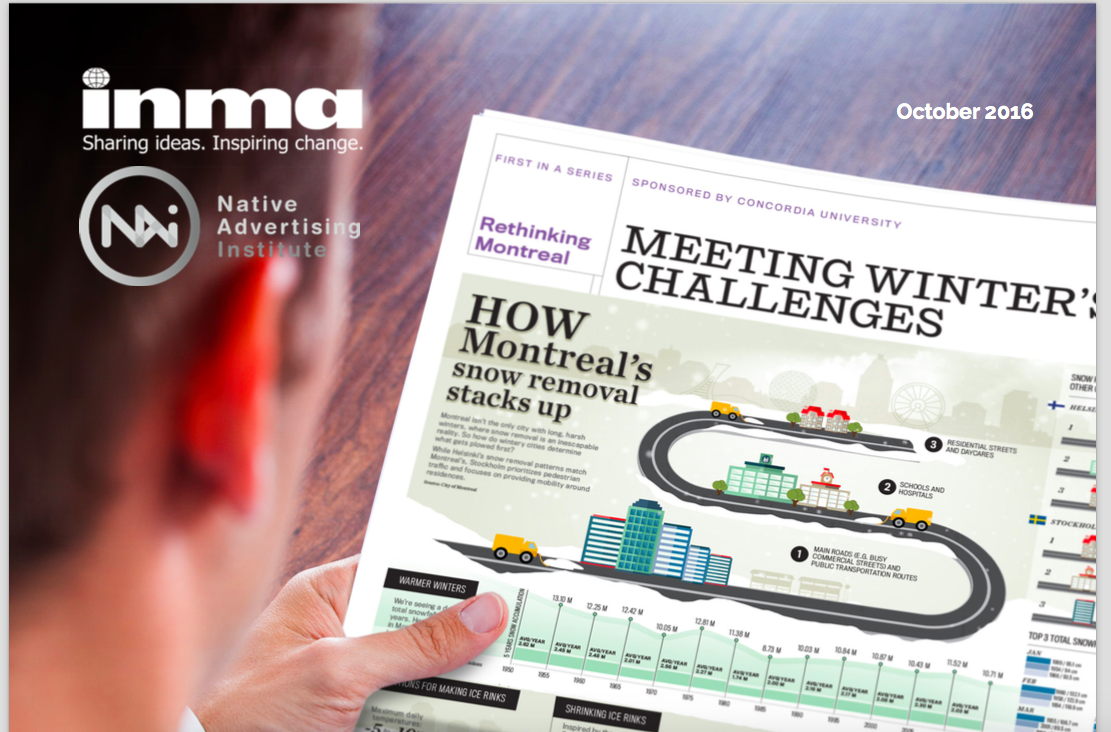
NATIVE ADVERTISING TRENDS 2016: THE NEWS MEDIA INDUSTRY (Jesper Laursen and Martha Stone),
This week finds me in Dubai, working with the team of the Gulf News. The discussion: all about sponsored content.
And the workshops we are holding are not limited to those in the traditional advertising department, but include people from the newsroom, the magazine division, technology and design.
I believe that we will see sponsored content moving to the front of the bus in 2017. So, for the rest of this week, I will be presenting some information about sponsored content and what it could mean for publishers everywhere.
What is sponsored content
Here are some of the best definitions I have found:
In its simplest definition, sponsored content is advertising that looks and reads just like a news story.
Sponsored content is generally understood to be content that takes the same form and qualities of a publisher’s original content. It usually serves useful or entertaining information as a way of favorably influencing the perception of the sponsor brand.
And from the NATIVE ADVERTISING TRENDS 2016: THE NEWS MEDIA INDUSTRY (Jesper Laursen and Martha Stone), which refers to sponsored content as native advertising. Note that the term native advertising is often used to convey the same meaning. I prefer sponsored content, since it is clearer and easier to understand, especially by readers:
“Native advertising is paid advertising where the ad matches the form, feel, function, and quality of the content of the media on which it appears. Frequently this advertising content topic is not directly about the advertiser’s brand, but rather is about a tangential or supporting topic or topics that may create a “halo effect” on the brand.”
I like this one, too:
Sponsored content isn't about a choice between journalistic integrity and fiscal favor. Rather, it's about blending the very best of both. It's nothing more than a publisher or publication leveraging its best assets–reporting, storytelling–and maintaining one of its core value propositions as an advertising partner
Label sponsored content properly

Some of the labels used by news media publishers include “advertisement,” “featured content,” “sponsored content,” “suggested post,” and “promoted content.” In many countries, legislation has been passed to protect consumers from being deceived by misleading native advertising content.
Perhaps the most essential of all rules about sponsored content is that it is properly labeled as such.
Sponsored versus traditional advertising
Sponsored content is higher up the marketing funnel — establishing relationships and awareness. Display ads by contrast are for reminders or point-of-purchase decisions.
Don’t call them advertorials
Advertorial: Advertorials seek to present advertising as editorial content to convey claims and messages the reader wouldn’t otherwise find credible. By contrast, sponsored content (done well) is properly labeled and clearly associates the brand with the content — the goal is to have the reader know and appreciate the brand’s involvement, not to hide it.
While advertorial is a valuable form of advertising, sponsored content is fundamentally different because sponsored content pieces are written like a news story told by a marketing professional instead of the advertiser.
Coming up
Tuesday: Who produces sponsored content?
Wednesday: Sponsored content and the local newspaper
Thursday: How much to charge?
Friday: Getting started
Speaking in Austin, Texas
